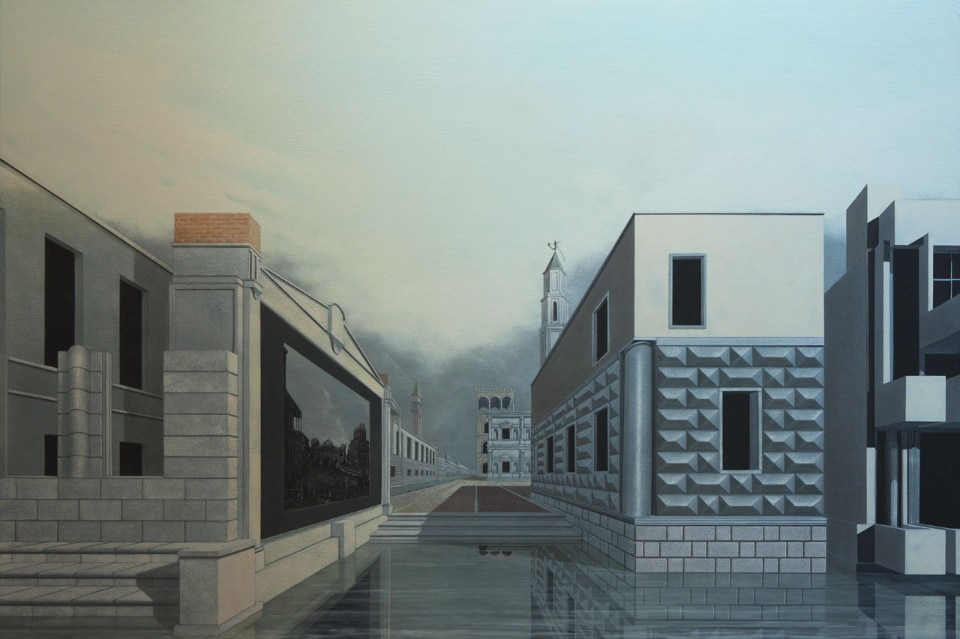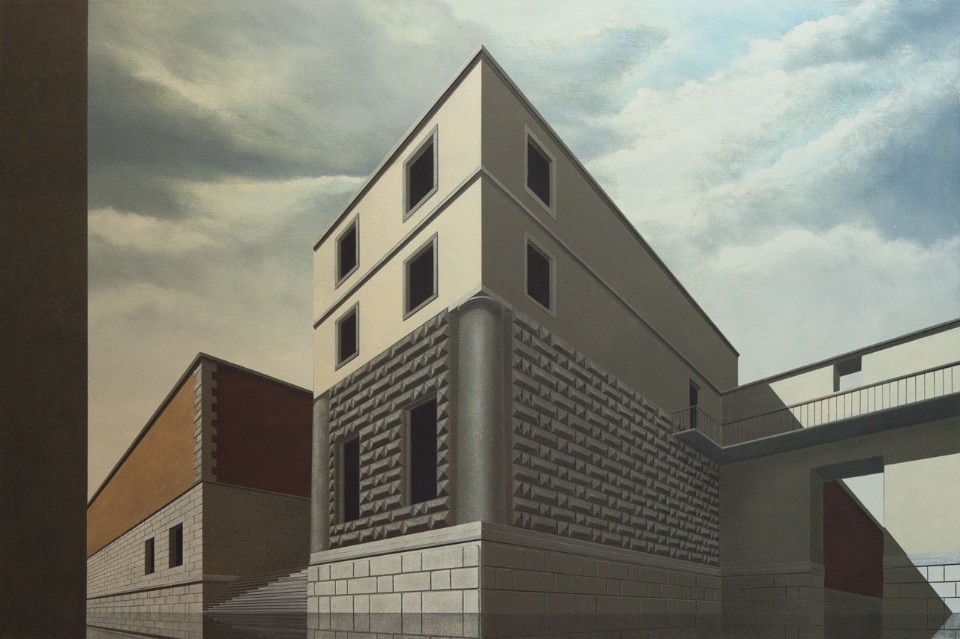
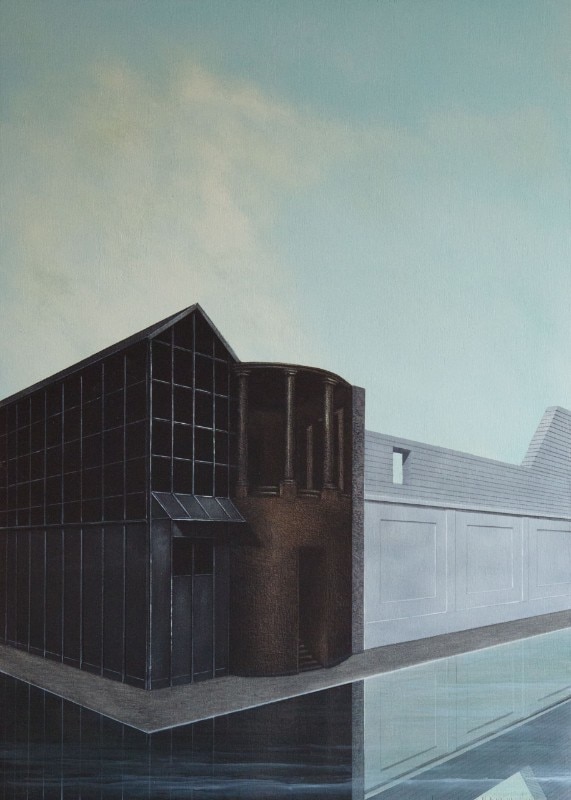
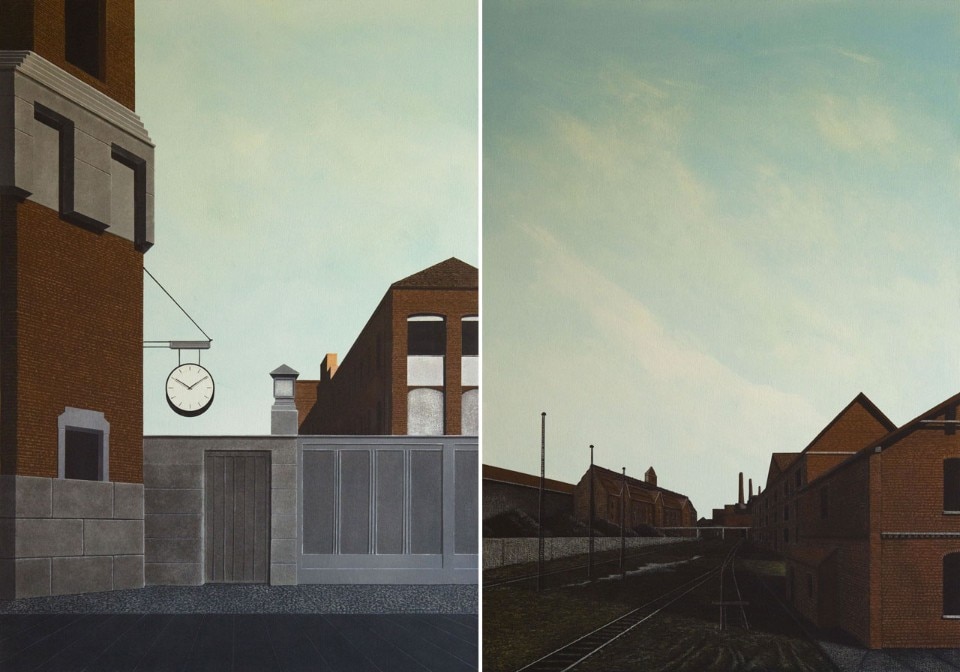
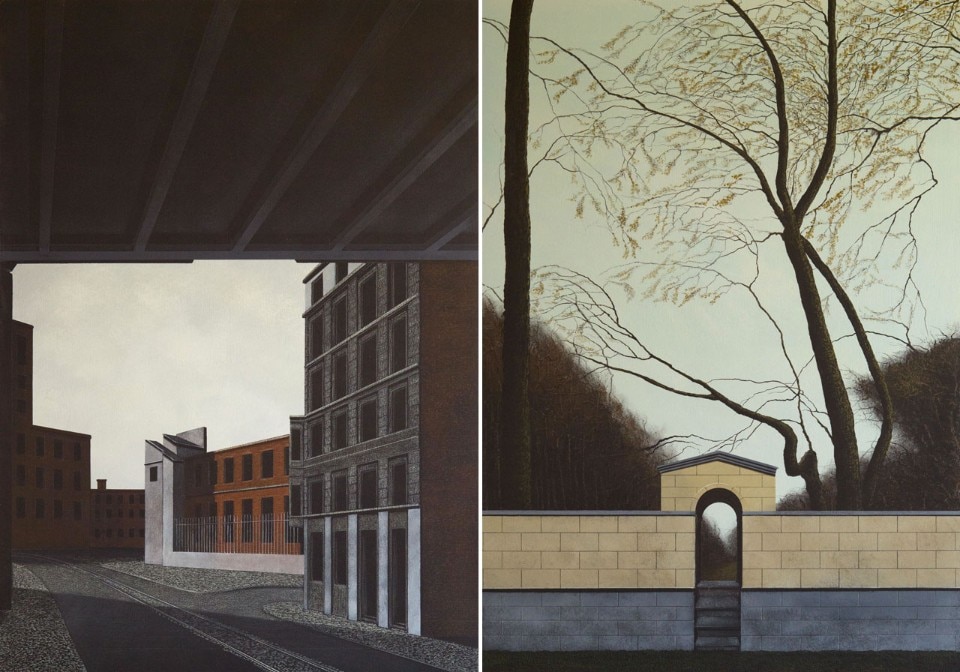
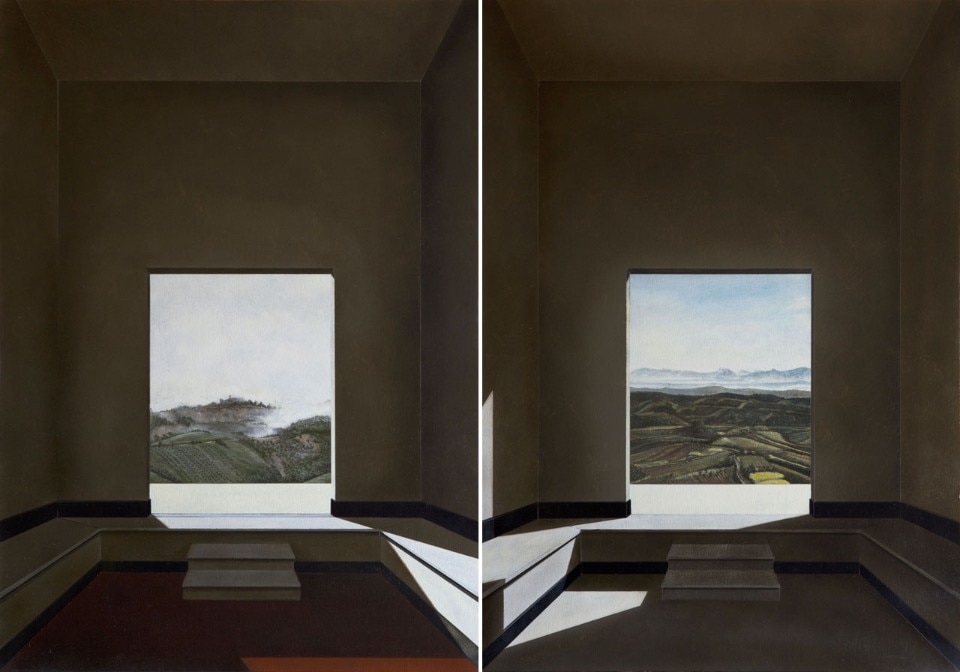
In this series, Arduino Cantàfora’s painting seems to have lost the fixedness of interiors cloaked in shadow – those same interiors that fuelled the nostalgic imagery of many of his students at Lausanne Polytechnic – and opened up to a universe filled with characters that are as real as they are unlikely. This new universe more closely resembles a Hopper interior than the almost abstract aspects of his rooms brought to life by the implacable slanting light of the famous Muri abitati series created a dozen or so years ago.
In this exhibition, Cantàfora offers an as yet concealed part of his biography, a complement to that Passaporto per la Vita that is its literary version in which he thinks about what exists alongside the great Story, if indeed it exists, and the little story in which everything slowly undergoes a metamorphosis and speaks of impossible books left unwritten. (cf. Arduino Cantàfora, Passaporto per la Vita, Christian Marinotti Edizioni, Milan 2009).
until 18 July 2015
Arduino Cantàfora. Éloge de l’ombre
Galerie de l’Univers
rue Centrale 5, Lausanne

